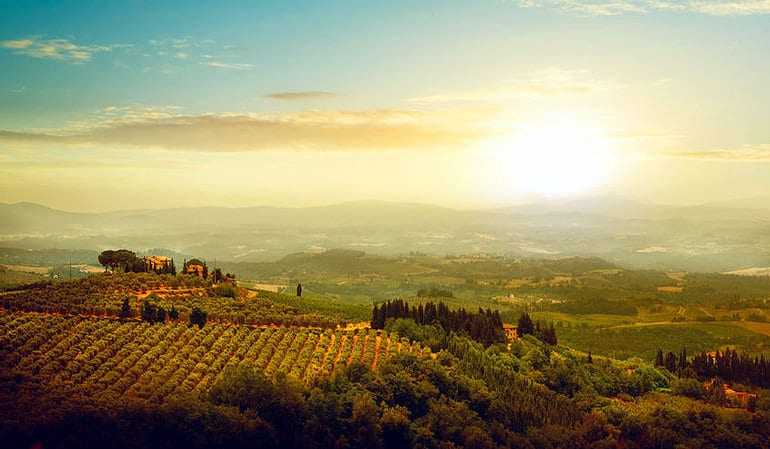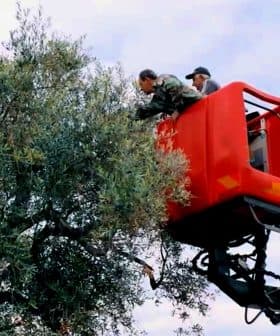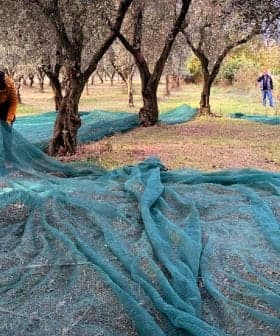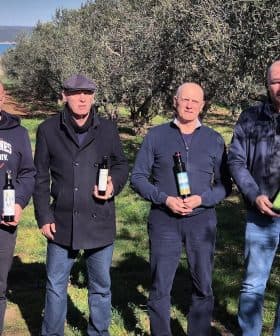Finding Where One Umbrian Producer Leaves the Biggest Footprint
Researchers from the CRB Biomass Research Center in Italy found that transportation to end consumers was the biggest contributor to greenhouse gas emissions and energy consumption in the production and supply chain of extra virgin olive oil in Umbria. The study suggested that reducing the weight of packaging, switching to container ships for transportation, and using biodiesel for farm machinery could help reduce the carbon and energy footprint of the olive oil industry.

Transport to the end consumer was the major contributor of greenhouse gases and consumed the most energy in a case study of the production and supply chain of extra virgin olive oil. Researchers from the CRB Biomass Research Center in Perugia, Italy, reported these findings after assessing the “cradle to grave impact” of olive oil production in Umbria.
For their study, which was published in the journal Science for the Total Environment, the researchers followed a systematic approach to evaluate the environmental impact ofextra virgin olive oil production and distribution. The life cycle assessment started with cultivation of olive trees in the Umbria region of Italy, extraction and storage of extra virgin olive oil; packaging and distribution to the end customer; and disposal of empty bottles after consumption.
While the researchers surmised that the mill they analyzed was “representative of small to medium size farm plants,” there were three practices among the various stages of production that would not be considered standard to many producers: The producer they studied kept oils stored frozen, bottled theextra virgin olive oil in single-dose 10ml glass vials, and shipped the products by air.
“Our carbon footprint analysis referred to a specific case study of theextra virgin olive oil producer,” said Elisa Lasscaro, an author of the study, “and considered the primary data according to the production chain of that company,”
The researchers found that fertilization of olive trees with large amounts of nitrogen fertilizers and the use of farm equipment to harvest olives contributed greatly towards greenhouse gas production and energy consumption in the initial stage ofextra virgin olive oil production.

During the second stage, the researchers found, electricity used to manufacture glass bottles for packaging olive oil and fuel used to transport the bottles to the mill added to the emission of greenhouse gases and energy use in the third stage ofextra virgin olive oil production.
Electricity for freezing extra virgin olive oil, and leakage of refrigerant during freezing were the two steps that produced considerable amounts of greenhouse gases and used considerable amounts of energy.
The researchers said freezing oil that was destined for foreign markets was gaining in popularity, after another study found extra virgin olive oil that had been frozen prior to transport retained more of its phenols and the organoleptic qualities throughout its shelf life, when compared to oil that had not been frozen.
In the final stage, transporting EVOO from Italy to the end consumer in the United States by air, produced the most greenhouse gases. The carbon and energy footprints was substantially higher than when shippingextra virgin olive oil to Japan by sea or by road to other European countries.
The EPA states that increased production of greenhouse gases — carbon dioxide, methane, nitrous oxide, and fluorinated gases — which started with the industrial revolution in the 1700s, is the major cause of climate change. The impact of climate change is widespread and has resulted in global warming, increased the occurrence of natural disasters, and caused glaciers to melt at alarming rates.
Climate change also affects human health in a number of ways. It is known to increase the risk of respiratory disease due to poor air quality and cause unexpected deaths from cardiovascular and respiratory diseases in the elderly due to extreme heat. If left unchecked, climate change may even alter patterns of infectious diseases such as malaria and dengue, according to the World Health Organization.
Although there is global awareness of the daunting effects of climate change and many sectors are making efforts to reduce production of greenhouse gases, in April 2014 the FAO reported that emission of greenhouse gases from agricultural sources increased by 14 percent from 2001 to 2011.
To reduce the carbon footprint and energy footprint of the olive oil industry, the authors suggest shipping extra virgin olive oil to the United States in container ships instead of by air. Other steps that can help reduce greenhouse gas production by the olive oil industry is the use of biodiesel made from waste vegetable oil for operating farm machinery for harvesting and transporting olives from farms to mills.
Reducing the weight of glass bottles used for packaging extra virgin olive oil would reduce the amount of electricity used and also reduce production of greenhouse gases. While use of electricity for freezing and maintaining freshness ofextra virgin olive oil might be worthwhile, replacing refrigerant cooling agent R407A with low-impact agents could be another step toward reducing the carbon and energy footprint in the life cycle ofextra virgin olive oil production and distribution.









